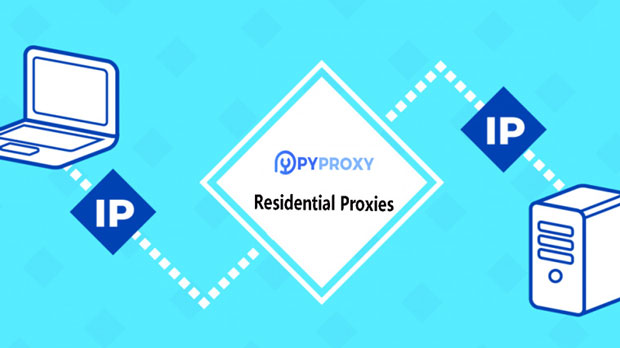Is SockS5, a residential proxy server, suitable for bypassing social media censorship?
In the current Internet environment, bypassing social media blockades has become a demand faced by many users. Due to various reasons, including political censorship, geographical restrictions, and content censorship, social media platforms often block users in specific regions. In order to access blocked platforms and content, many people choose to use proxy servers. Among various proxy protocols, socks5 proxy has become a popular choice to bypass blocking due to its high anonymity and privacy protection features. So, is SockS5, a residential proxy server, suitable for bypassing social media censorshipResidential proxy server Socks5 is a proxy based on the Socks protocol, which can effectively hide users' real IP addresses and simulate normal network traffic, allowing users to access blocked social media platforms. Compared to traditional data center agents, residential agents use actual residential IP addresses that are geographically closer to the user's target, making them less likely to be recognized as agents. Overall, the residential proxy server SockS5 is an ideal choice for bypassing social media censorship due to its anonymity, stability, and flexibilityHowever, the effectiveness and reliability of this approach are also affected by various factors, including the quality of the proxy services used, the strictness of the blocking mechanism, and the anti cheating technology of the target platform. In this article, we will delve into the advantages and disadvantages of the residential proxy server SockS5, and analyze its practical application effect in bypassing social media censorship1. What is a residential proxy server Socks5 Before delving into whether the residential proxy server SockS5 is suitable for bypassing social media blocking, it is first necessary to understand the basic concepts of this technology1. Definition of Proxy ServerA proxy server is a data transmission system that mediates between a client and a target server. It acts as a 'proxy', forwarding user requests and returning response data to the user. The main function of a proxy server is to hide the user's real IP address, enhance anonymity, or bypass geographical location restrictions by changing the IP address2. Socks5 protocolSockS5 is a protocol that supports proxy communication and has strong flexibility and compatibility. Unlike HTTP proxies, SockS5 is capable of handling a wider range of network traffic, including TCP and UDP protocols, making it widely applicable. The core advantage of Socks5 proxy is its high degree of anonymity, as it does not modify packet content and simply forwards data, making it more difficult to track and block3. Characteristics of Residential AgentsResidential agency provides agency services through real residential IP addresses, which come from ordinary home broadband users. Unlike data center agents, the IP address of residential agents looks like the network connection of ordinary home users, making it difficult to identify as a proxy server. This feature enables residential agents to have a high success rate in bypassing IP blocking, anti fraud mechanisms, and firewallsCombining the above three concepts, the combination of residential proxy server Socks5 protocol provides a relatively covert and stable proxy solution, suitable for bypassing social media blockingSecondly, the advantages of SockS5 residential proxy server in bypassing social media blockingThe residential proxy server SockS5 has the following significant advantages when bypassing social media blocking:1. Strong concealment, reducing the risk of blockadeSocial media platforms typically use technologies such as IP blocking or traffic recognition to prevent user access. Due to the fact that residential agents use IP addresses from real users, these IP addresses appear to be "normal" home broadband connections on social media platforms, rather than coming from proxy servers. Compared to data center proxies, residential IP addresses are not easily recognizable, resulting in a higher success rate in bypassing blockades2. Avoid being identified as a robot or crawlerSocial media platforms will use technologies such as behavior analysis and anti cheating mechanisms to detect whether automated tools (such as crawlers or robots) are accessing their platforms. Residential agents, due to their natural and stable traffic sources, can effectively avoid these detection mechanisms and provide users with a smoother access experience3. Support multiple application scenariosThe SockS5 protocol not only supports browsing web pages, but also supports more types of traffic, including P2P downloads, online games, and instant messaging. Therefore, the residential proxy server SockS5 can provide a wider range of uses, suitable for accessing restricted social media content and other network services4. Breaking through geographical location blockadeMany social media platforms impose geographic restrictions based on users' IP addresses, resulting in users in specific countries or regions being unable to access certain content. By using residential agents, users can simulate IPs from different regions, thereby bypassing these geographical blockades and smoothly accessing social media content worldwideIII. Limitations and Challenges of SockS5 Residential Proxy ServerAlthough residential proxy server SockS5 has many advantages in bypassing social media blocking, there are also some limitations and challenges that users need to consider comprehensively when choosing1. Speed and stability issuesDue to the fact that the IP addresses of residential agents come from regular home networks, the speed and stability of these IPs may not be as good as the high-performance IPs provided by data centers. Especially during peak hours, users may encounter issues such as delays and connection interruptions, which can affect the browsing experience on social media platforms2. Proxy IP resources are limitedCompared to data center agents, residential agents have limited IP resources. Due to these IPs coming from actual users' networks, it is impossible to have a large pool of IPs like data center proxies. When using residential agents, users may face the problem of insufficient IP addresses, which limits their ability to bypass blockades3. High costDue to the fact that residential proxy servers require leasing the actual residential IP, their fees are usually higher than those of data center proxies. For some users with limited budgets, this may be a cost factor that cannot be ignored. Although residential agents can provide higher anonymity and stronger blocking and bypassing capabilities, their high prices may deter some users4. May face new blockade technologiesWith the continuous improvement of identification technology for proxy services on social media platforms, some platforms may update their blocking mechanisms to identify and block residential agents. Although the IP address of residential agents is difficult to detect, it does not mean that they are completely immune to new anti proxy technologies. Therefore, when using residential agents, users need to always pay attention to the platform's blocking dynamics to avoid being blocked4. How to improve the success rate of residential proxy server Socks5 bypassing social media blockingIn order to improve the success rate of residential proxy server SockS5 in bypassing social media blocking, users can take the following measures:1. Choose a high-quality proxy service providerHigh quality residential agency service providers are typically able to provide more stable and faster IP addresses, and can continuously update their IP pools to ensure that user access is not blocked. Choosing a reputable supplier can effectively avoid connection failures or slow speeds caused by poor proxy quality2. Using multiple proxy IP rotation techniquesTo avoid being affected by the blocking of a single IP address, users can use IP rotation technology to regularly change proxy IPs. This approach can effectively prevent social media platforms from recognizing multiple visits to the same IP, thereby reducing the risk of being blocked3. Using encryption technology to increase securityThe use of encryption techniques such as VPN encryption or SSL encryption can further enhance the security and privacy protection of user data, preventing data from being monitored or tampered with. This is particularly important for using residential agents in areas with strict lockdown, as it can ensure the protection of user privacy while bypassing the lockdown4. Pay attention to the blocking dynamics and make timely adjustmentsThe blocking techniques and strategies of social media platforms will continue to upgrade, and users need to constantly monitor the blocking dynamics of social media platforms and adjust their proxy strategies according to the situation. For example, if the IP address of a specific region is blocked, you can try changing to an IP address from another region to maintain access stabilityFifth, SummaryAs a highly covert and anonymous proxy technology, residential proxy server SockS5 is indeed an effective tool for bypassing social media censorship. Its advantage lies in the ability to provide IP addresses similar to those of ordinary home users, reducing the risk of being identified as proxies, thus performing excellently in breaking through IP blocking, anti cheating detection, and geolocation blocking. However, residential agents also face issues such as speed, stability, and cost. Users should weigh the pros and cons according to their own needs when making choices, and combine appropriate technical means to improve the success rate of bypassing the blockade
2024-12-17
























































